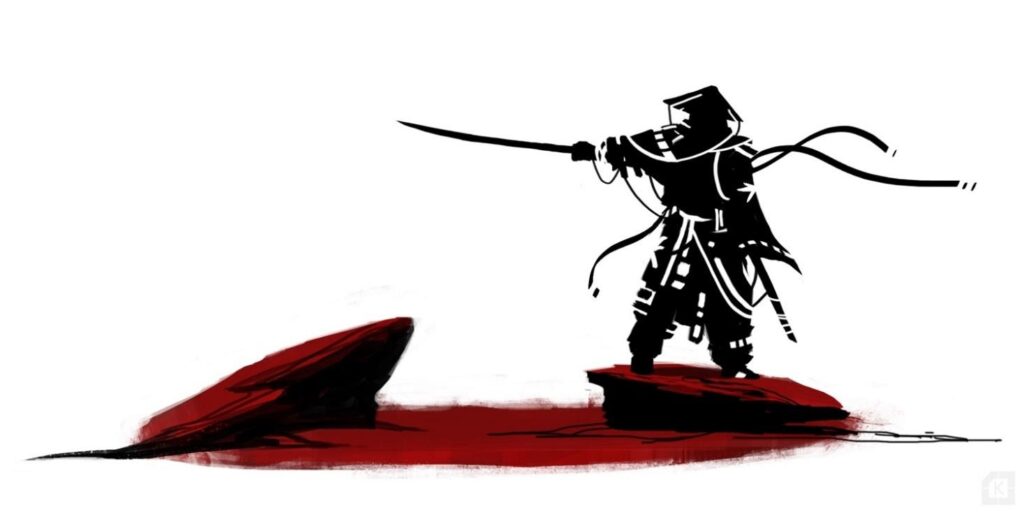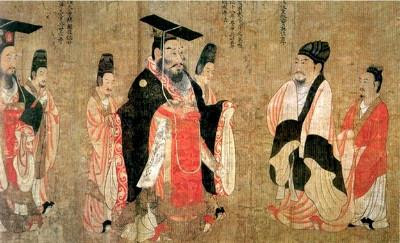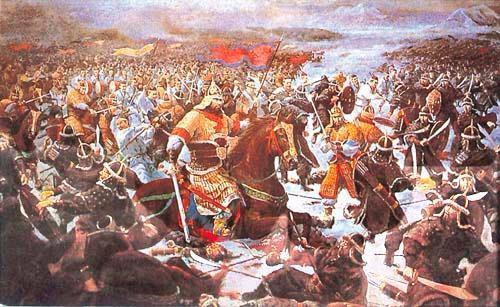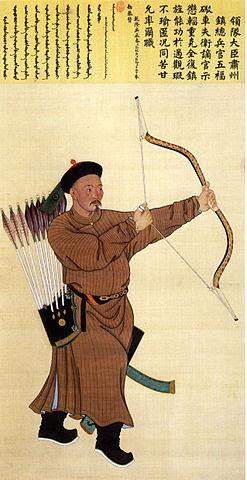Samurais are members of a powerful military rank, employed by feudal lords (daimyo). Samurai defend against enemies classified by the government. They denote the noble warriors (Bu Shi). Chinese character 侍 (Shì) means to serve or to attend to the higher orders of society. Shì is nominalized to denote “those who serve in close attendance to the aristocracy”. It depicts the same meaning in the Japanese term saburau (the original term of samurai).
In history of China, Chinese samurai thought to exist as Shì in the Pre-Qin Dynasty. Shì was like knights that had a fief. Later on, they became officers of the emperor instead of local lords after China was unified.

Contents
Contents
Do Chinese Samurai Ever Exist?
According to some references, samurai had never existed outside Japan, especially in China. And this is because samurai work for the feudal while China has a bureaucratic system. Also, the Chinese had a very faint view of soldiers, and so with samurai. There’s a Chinese adage that “good men don’t become soldiers, and good iron never used to make nails”. Therefore, Chinese people discouraged male members of the family from joining the military service. They give importance to highly cultured erudite bureaucrats rather than allowing them to become soldiers. (https://www.nuestra-gente.com)
Although the Chinese have a dim view of warriors, the closest counterpart of samurai was the ancient Zhou dynasty’s aristocracy. During this period, there were forms of nobility and feudal social structures. However, it would be a far stretch to match the Zhou nobility to Samurai. The Shi (where the word Samurai or Bu Shi derived from) were low-level nobles who rode on chariots during the Zhou dynasty (1046–771 BC). The Shi were regarded as a noble social order of the low-level aristocratic class. They were not highly respected members of society because the Chinese embraced intellectual cultivation and despised violence. Therefore, gentry scholars would not legitimize professions concentrated mainly around force and violence.
Who was the documented Chinese Samurai?
Kanji (李聖賢) was one of documented foreign-born samurai in Japan. He was born in Henan, Ming Dynasty. Before arriving in Japan, he was a member of the inner circle of the Ming dynasty. He arrived in Japan on 1624 and became a political refugee from Ming. He changed his name to Kawaminami Genbei (河南源兵衛), and served as a Tōtsūji (a Chinese translator) of the Satsuma domain (officially known as the Kagoshima Domain) and had the right to wear swords.
The Dynasty in which Samurai Exist?
The Shi existed during Shang (1600–1046 BC) and the Early Zhou dynasties (1046–771 BC). The Shi was the closest equivalent of samurai in China. But unlike Japan who had high prestige and special privileges, Shi, on the other hand, was taken as the noble social order of low-level aristocratic lineage during the Pre-warring state period.

The definition of Shi has evolved over time. In the warring state period (403–221 BC), Shi involvement in battles has decreased. Because the warring state period is much more deadly than in the previous era, leaders sought men with actual military training, rather than just having aristocratic background. The system became more organized and developed new skills to be more efficient. Intellectual pursuits became highly valued, and warriors had to dedicate time and effort to develop new skills. Ultimately, Shi became notable for their wisdom, administration skills, principles, and virtue, more than their warrior skills.

In the later period during the Qin and Han Dynasty, the Chinese established the first imperial army. Emperors moved warriors and their families near the Great Wall of China. Later, the Wei dynasty formed a new class of private army, called the Buqu.
Chinese Samurai in Ancient Times
Chinese has no samurai, but during the ancient times of the Shang and Zhou dynasties, they have Shi (士). Shi were low-level aristocrats like Japanese samurai. In ancient China (771BC), Shi served as the officials of a feudal superior, both in military and administrative services. After the unification of China, all feudal states were destroyed, and the class of Shi was obliterated. The old style was replaced by a new class of Shi who was devoted to literature and not to military affairs. Emperors hired professional soldiers and mercenaries to take over military responsibilities. Shi then, became scholars and government officials in the era of a unified China.
During the unification of China, another class of warriors has emerged called the knight in China-Xia(俠). They are wandering vigilantes in China who act upon their principles. They often disdain the authorities and give service to the poor. The principles that they hold are closer to modern concepts of humanity and justice.
Ancient Chinese Warrior Combat Weapons and Techniques
Ancient Chinese warriors use weapons and equipment just like European knights and Japanese samurai. During warring times, technological advancement brought new types of weapons such as iron crossbows. Shi transitioned from foot knights to being essentially chariot archers, and used long weapons like pikes, spears, and halberds. Although swords were effective, it was too expensive to become part of a standard warrior’s equipment, since Shi were just peasants and low-level aristocrats. As battles became more intense, chariot warfare became obscured by mounted cavalry and infantry units with powerful crossbowmen. Later on, Chinese weapons have developed. Chinese were the first to deploy gun powder weapons. In 905 AD, the Chinese used guns, cannons, bombs, grenades, and mines.
